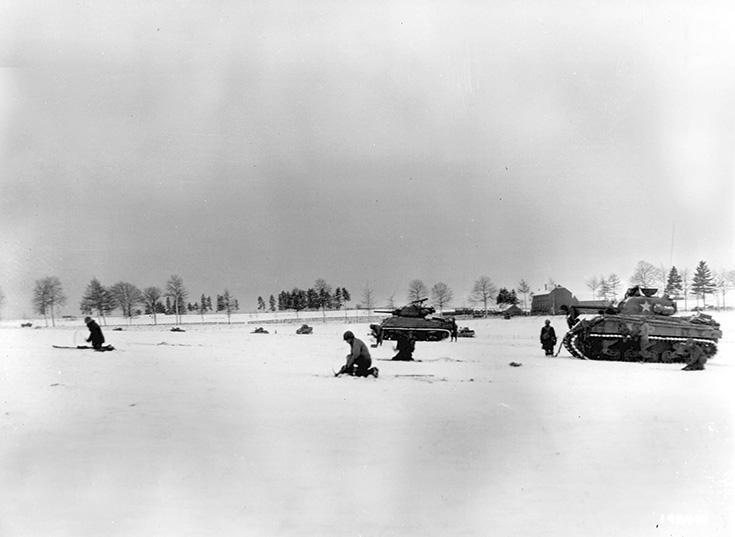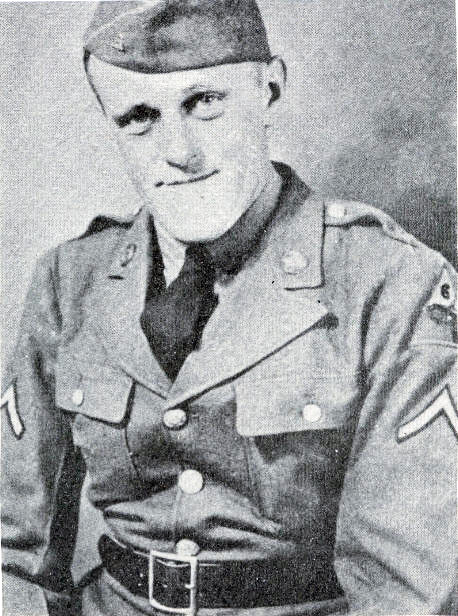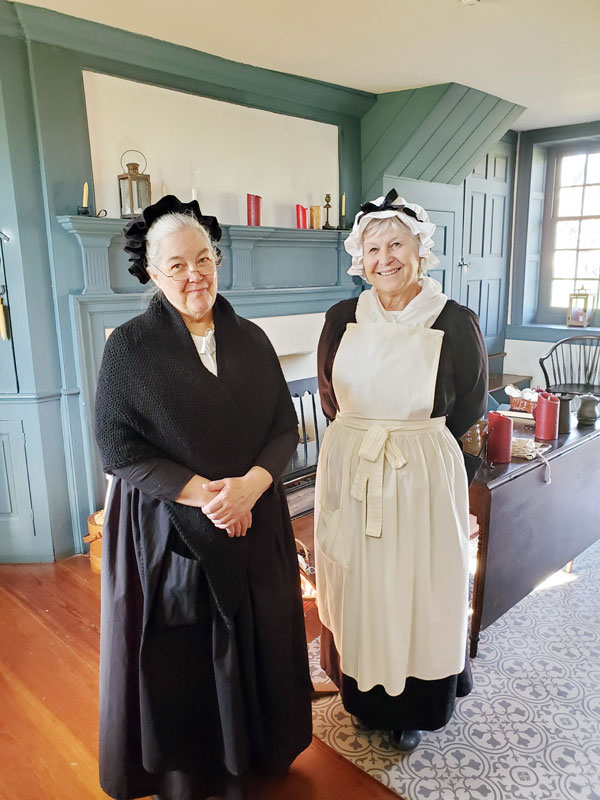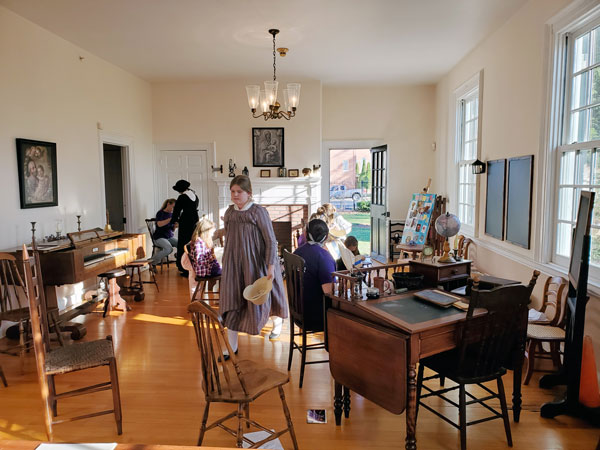PFC John Little, Emmitsburg
KIA in the Liberation of Bizory
by Richard D. L. Fulton
John William Little was born on December 19, 1910, to parents John William and Minie Little, and resided on Frederick Street, Emmitsburg, Maryland, and had two sisters, Valerie and Anna, and three brothers, Robert, Roy, and James.
James was included as one of the brothers by a write-up that appeared in The (Frederick) News on March 12, 1945. However, James is not mentioned in the 1930 census. The census lists the Little’s three brothers as Robert, Roy, and Charles.
According to his draft card and enlistment records that Little had filled out when he was 90, he indicated that he was employed at St. Joseph’s College as a fireman before entering service, and that, regarding his education, he had attended “grammar school.”
Little was enlisted at Fort George G. Meade on April 3, 1942, and given the rank of private. He was subsequently stationed at Camp Cook, California, and Camp Chaffee, Oklahoma, before going overseas (at age 34) and was a member of a tank crew in the 68th Tank Battalion, 6th Armor Division, in General George S. Patton, Jr.’s Third Army.
Little was given leave in December 1943, to return home, following the death of his father, to attend the funeral.
The 6th Armor Division entered the war via Utah Beach, Normandy, July 19, 1944, ultimately fighting its way through Northern France, Central Europe, and finally, the Ardennes.
He was injured in November 1944, when the tank in which he was traveling was knocked out by enemy fire, resulting in his being wounded in the face and left leg. The Gettysburg Times Reported on January 30, 1945, that “He was able to able to return to action shortly thereafter… after the medic treated him.”
Little wrote his last letter home on December 27, 1944, stating that “he was well, and expecting to be to be sent to some other country, which he could not identify, within a short time,” according to The Gettysburg Times.
That “some other country” would be Belgium, and Little would soon find himself and 6th Armor Division the rolling towards Bastogne, a Belgian city that the German troops were in the process of laying siege to, as part of an over effort ordered by Adolf Hitler to attack allied forces that were slowly griding their way towards Germany – an overall engagement that came to be known as the Battle of the Bulge.
The Battle of the Bugle would become Hitler’s last stand before his 12-year-long “1,000 Year Reich” began to implode from the allies tearing into it from all directions.
The German siege of Bastogne was ultimately broken by the U.S. forces, including the 6th Armor Division, during seven days of battle, from December 20 to December 27, 1944. In January, 1945, the U.S. forces were ordered to begin driving off the German troops that remained in the area.
As a part of that effort, the 6th Armor Division was ordered forward to take the village of Bizory (sometime misspelled as Bixory on some web sites) away from its German occupiers. Bizory lies about 2.6 miles northeast of Bastogne.
The village was soon liberated, and the 6th Armor Division was solely credited with accomplishing the objective. Unfortunately, Little, who would make his final stand in the fight to liberate Bizory, was initially declared missing in action on January 8, 1945. He was 34 at that time. Little was shortly thereafter reclassified as killed in action. But it would appear that Little’s body was never recovered. His name is listed on the “Tablets of the Missing” in the Ardennes American Military Cemetery, Neuville-en-Condroz, Arrondissement de Liège, Liège, Belgium.
Little was awarded the Purple Heart W/Cluster and was also posthumously promoted to private first class.

Photo Courtesy of U.S. Army public domain

PFC John William Little, Photo Courtesy of findagrave.com



 Earl A. Rice, Jr. and Mary (Gene) Eugenia (Matthews) Rice were meant to be together. Some of the family members joke that their marriage was an arranged one. Earl and Gene first met in the backyard of the old Rouzer home in Thurmont, from which, the wall paper, now in the Diplomatic Reception Room of the White House, came. Their mothers—Jessie (Rouzer) Matthews and Helen (Creager) Rice—grew up as next-door neighbors, and were visiting their childhood homes with their first born on the same weekend, sometime in 1924—when someone snapped the above picture. It must have been love at first sight, because they grew up separated by a mountain range and thirty-five miles. They would see each other on occasion during these kinds of weekend visits and dated during their teens and early twenties. They mostly double-dated—the only way Jessie found acceptable—and have many fond memories of those times. Earl sometimes got to borrow his mother’s Lincoln Zephyr, so they got to date in style. Mostly, he came in the Model A that he and his lifelong friend, Henry Steiger, owned together.
Earl A. Rice, Jr. and Mary (Gene) Eugenia (Matthews) Rice were meant to be together. Some of the family members joke that their marriage was an arranged one. Earl and Gene first met in the backyard of the old Rouzer home in Thurmont, from which, the wall paper, now in the Diplomatic Reception Room of the White House, came. Their mothers—Jessie (Rouzer) Matthews and Helen (Creager) Rice—grew up as next-door neighbors, and were visiting their childhood homes with their first born on the same weekend, sometime in 1924—when someone snapped the above picture. It must have been love at first sight, because they grew up separated by a mountain range and thirty-five miles. They would see each other on occasion during these kinds of weekend visits and dated during their teens and early twenties. They mostly double-dated—the only way Jessie found acceptable—and have many fond memories of those times. Earl sometimes got to borrow his mother’s Lincoln Zephyr, so they got to date in style. Mostly, he came in the Model A that he and his lifelong friend, Henry Steiger, owned together. Earl and Gene lived for a time in California, then onto various assignments, including Pecos, Texas, where these East Coast kids had to contend with such things as spiders and West Texas dust storms. Earl and his crew had to travel separately on a troop train, while the wives followed with one of his fellow officer’s mother as a chaperone, another sign of a different time. Gene made some lifelong friends, with many of the wives demonstrating the love that has endeared her to all those around her. Only a short time after their marriage, Earl and his crew were assigned to their B-29 in the South Pacific Island of Tinian. They had to travel on a troop ship to meet up with their aircraft. Gene headed back home.
Earl and Gene lived for a time in California, then onto various assignments, including Pecos, Texas, where these East Coast kids had to contend with such things as spiders and West Texas dust storms. Earl and his crew had to travel separately on a troop train, while the wives followed with one of his fellow officer’s mother as a chaperone, another sign of a different time. Gene made some lifelong friends, with many of the wives demonstrating the love that has endeared her to all those around her. Only a short time after their marriage, Earl and his crew were assigned to their B-29 in the South Pacific Island of Tinian. They had to travel on a troop ship to meet up with their aircraft. Gene headed back home.
 Joseph Flautt Frizell was walking along the tracks of the Emmitsburg Railroad one evening in May 1922 with some friends. They were goofing around, as teenage boys are known to do, as they approached the station located on South Seton Avenue.
Joseph Flautt Frizell was walking along the tracks of the Emmitsburg Railroad one evening in May 1922 with some friends. They were goofing around, as teenage boys are known to do, as they approached the station located on South Seton Avenue.